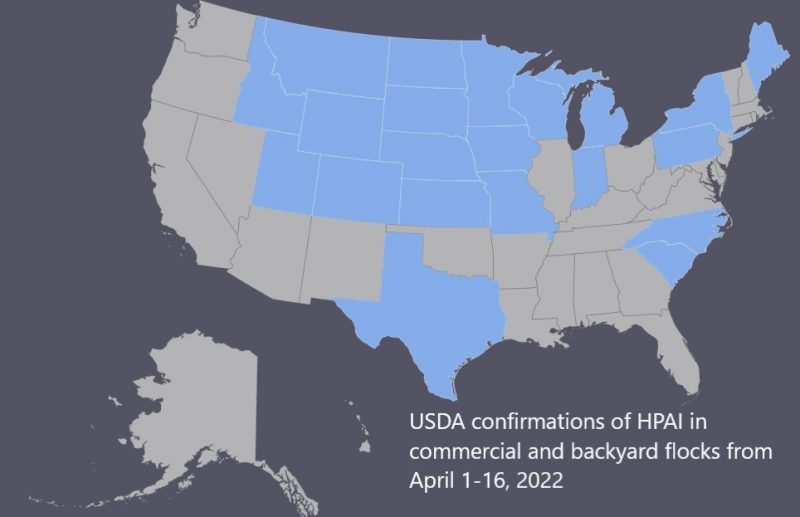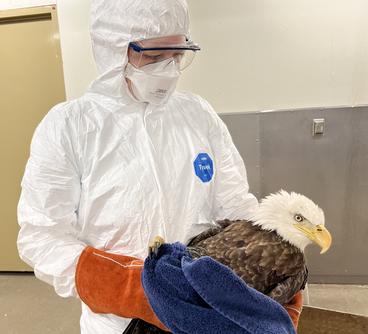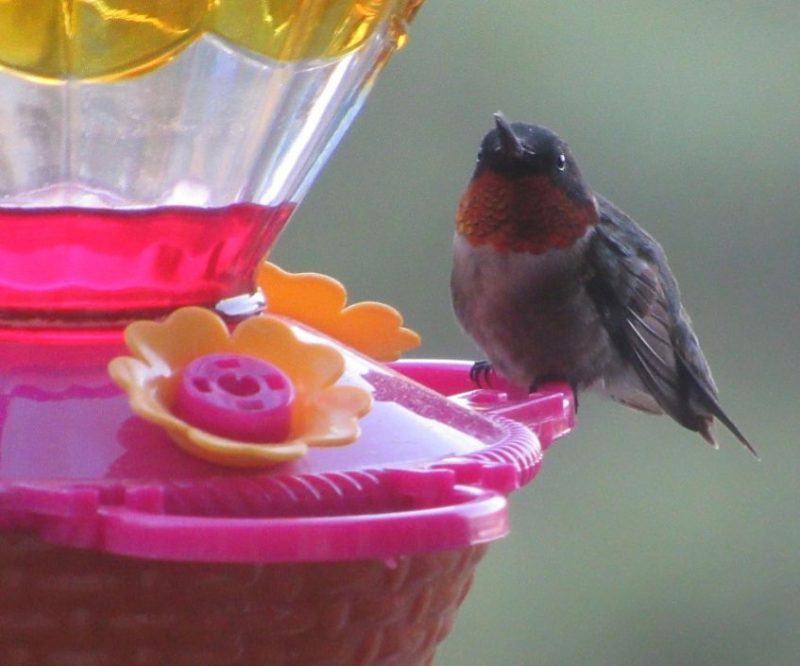Bird flu outbreak: “Take down feeders,” experts say
A severe strain of bird flu
A highly pathogenic avian influenza (HPAI) – or especially severe bird flu – is causing sickness among both domestic and wild birds across the United States. So the Raptor Center at the University of Minnesota sent a tweet today (April 19, 2022), recommending that people in U.S. states with HPAI take down their bird feeders and bird baths for a couple months this spring, to help decrease the spread of this virus. See the map above for affected states.
This avian influenza does not pose any risk to humans, and there are no human cases of avian influenza viruses in the United States. But the virus can be deadly in some birds.
The U.S. Geological Survey reported that HPAI viruses, including the current strain named H5N1, do cause high mortality in poultry and occasionally cause high death rates in certain species of wild birds. Waterfowl, shorebirds and seabirds are most likely to carry and shed the virus without showing signs of illness. Raptors, such as eagles, owls and hawks, are the most likely to get sick quickly and die from the virus.
The effect on songbirds is less well known because this group has fewer studies and monitoring.
Due to the current outbreak of the Highly Pathogenic Avian Influenza (HPAI), the University of Minnesota’s Raptor Center recommends that you take down your bird feeders this spring to slow the spread from bird to bird. Learn more at https://t.co/zAZMMuOcgw @umnCVM pic.twitter.com/mBciWebmDV
— University of Minnesota (@UMNews) April 19, 2022
HPAI in poultry
This spring, the virus has been turning up in poultry populations across the country. In Pennsylvania, one commercial operation with almost 1 1/2 million chickens identified HPAI in their flock, resulting in a 6-mile (10-kilometer) quarantine. Pennsylvania Agriculture Secretary Russell Redding said that there is no concern for humans. He also said:
However, wild birds carry the virus and do not respect property or state lines.
The Conversation reported that, as of early April, the H5N1 outbreak caused the culling of some 23 million domesticated chickens and turkeys from Maine to Wyoming.
HPAI in raptors, waterfowl and other birds
The Raptor Center is monitoring their local wildlife populations for positive cases of avian influenza in what they call an “unprecedented outbreak” in the U.S. All birds are susceptible to HPAI, though they may not show symptoms. Birds pass on this virus to others through feces and respiratory secretions. Furthermore, the cold doesn’t stop it. The virus can survive for weeks in cool, damp environments.
Victoria Hall of The Raptor Center said:
The 2022 outbreak is unique because of the very high levels of transmission of the currently circulating H5N1 virus strain in wildlife. With minimal viral surveillance being done with songbirds, it is hard to measure the risk of transmission from songbirds to other birds.
The Raptor Center is testing birds such as bald eagles and owls every day for HPAI. HPAI produces intense suffering from fatal neurological illness in these birds. At the moment, euthanasia is the only tool people have to help the birds.
How you can help birds
The researchers recommend pausing the use of bird feeders and bird baths to keep birds from congregating in these locations and spreading the virus. Researchers don’t have all the data, but they’d like to slow the transmission if at all possible. As Hall said:
Because the science is unclear on the role of songbirds in this current H5N1 outbreak, one consideration is to not encourage birds to gather together at places such as bird feeders or bird baths. These are places where things like viruses could easily be exchanged between individuals.
Researchers hope that the rate of virus transmission will dramatically decrease over the next couple months, and we can return to welcoming the birds to our yard this summer. Hall said:
We have it in our power to take a short term action so we are not accidentally assisting in the virus’ spread. This outbreak won’t last forever and I, for one, am greatly looking forward to when I can safely hang my bird feeders back up!
Bottom line: Want to help birds during this unprecedented outbreak of a highly pathogenic avian influenza? Researchers recommend taking down bird feeders and baths for a couple months.
Read More: Bird flu outbreak: “Take down feeders,” experts say




